Take the time to honor and support your friends and colleagues, be sure to add the division award winners’ talks to your calendar, they are scheduled in various symposia throughout the week.
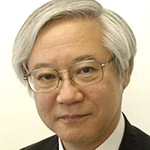 Dielectric Science and Technology Division
Dielectric Science and Technology Division
Thomas D. Callinan Award
Monday, May 29 | 1400-1440h
Norwich
Dielectrics for MOS Integrated Circuits
By Hiroshi Iwai
Hiroshi Iwai has worked in the semiconductor industry for 26 years. After receiving BE and PhD degrees from the University of Tokyo, he worked at both Toshiba Corporation and Tokyo Institute of Technology. Currently, he is Professor Emeritus at the Tokyo Institute of Technology, and vice dean and Distinguished Chair Professor of National Chiao Tung University in Taiwan.
Iwai is highly recognized for his significant contributions for the development of dielectric films. Those contributions include: introduction of BPSG film reflow to integrated circuits, finding plasma induced damage on gate insulator, prevention of boron penetration of gate oxide by RTN gate SiO2, and the introduction of 1.5 nm tunneling gate oxide to CMOS.
Additionally, Iwai is the chair of the ECS Japan Section. He has served as an organizer of many ECS symposia and has been a member of various Society committees. Iwai co-authored over 1,000 international and 500 domestic papers in journals and for conferences.
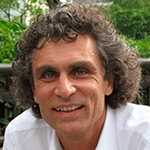 Energy Technology Division Research Award
Energy Technology Division Research Award
Monday, May 29 | 1140-1220h
Grand Salon B – Section 9
MEA & DM Characterization/Optimization for Low Pt Loadings and High Current Densities
By Hubert Gasteiger
Hubert Gasteiger began his career in electrochemistry in 1993 when he received his PhD in chemical engineering from UC Berkeley, followed by postdoctoral fellowships at the Lawrence Berkeley Laboratory and Ulm University. He moved on to join the Fuel Cell Activities program of GM/Opel (Honeoye Falls, NY, USA), leading catalyst and membrane electrode assembly (MEA) research. He was promoted to GM technical fellow in 2004.
In 2007, he joined Acta S.p.A. (Italy), working on alkaline membrane-based technologies. After a one-year visiting professorship at MIT (2009) with Yang Shao-Horn, working on lithium-air batteries, he was appointed chair of technical electrochemistry at the Technical University of Munich, where he is now focusing on materials, electrode, and diagnostics development for fuel cells, electrolyzers, and lithium-ion batteries.
Gastegier is an ECS fellow, received the 2012 Grove Medal for fuel cell research, the 2015 David C. Grahame Award of the ECS Physical and Analytical Electrochemistry Division, and held the George C.A. Schuit Award Lecture at the University of Delaware in 2015.
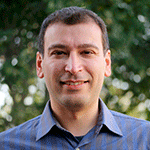 Energy Technology Division
Energy Technology Division
Supramaniam Srinivasan Young Investigator Award
Wednesday, May 31 | 0950-1030h
Grand Salon C – Section 16
New Insights into PFSA Ionomers – from Membranes to Thin Films
By Ahmet Kusoglu
Ahmet Kusoglu is a research scientist in the energy technology area at Lawrence Berkeley National Laboratory (LBNL), where he works on polymer materials for electrochemical devices and related electrochemical-mechanical phenomena for energy applications.
Kusoglu joined LBNL in 2010 as a postdoctoral fellow to study membrane transport and degradation in fuel cells. His research at Berkeley has focused on modeling and diagnostics of ionomers and their interfaces in an effort to understand and improve their functionalities in electrochemical energy devices. Prior to joining the lab, he received his PhD in mechanical engineering from the University of Delaware.
Kusoglu has published over 35 papers in peer-reviewed journals and a book chapter on fuel cell membranes. His current research interests involve the characterization and modeling of degradation, transport, and structure/function relationships in ionomers and thin films.
 Energy Technology Division Graduate Student Award
Energy Technology Division Graduate Student Award
sponsored by Bio-Logic
Monday, May 29 | 1400-1440h
Grand Salon B – Section 7
Advanced Water Management in Fuel Cells Using Engineered Gas Diffusion Layers with Patterned Wettability: From Concept to Fuel Cell Application
By Antoni Forner-Cuenca
Antoni Forner-Cuenca studied chemical engineering at the University of Alicante, where he graduated with honors. He completed his PhD at the Swiss Federal Institute of Technology in Zürich (ETHZ) in 2016 and performed his doctoral research in the Paul Scherrer Institute’s Electrochemistry Laboratory under the supervision of Pierre Boillat and Thomas. J. Schmidt.
Forner-Cuenca’s work focuses on the development of novel porous materials for advanced water management in polymer electrolyte fuel cells (PEFCs). In the frame of his PhD thesis, a method based on electron radiation grafting has been applied to porous substrates to modify the hydrophobicity of the inner surfaces, leading to materials with patterned wettability. The use of these modified materials in PEFCs lead to significant performance improvements.
In March 2017, Antoni will join the laboratory of Prof. Brushett at the Chemical Engineering Department of the Massachusetts Institute of Technology as a postdoctoral fellow to work on advanced electrodes for non-aqueous redox flow batteries.
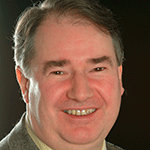 Electronics and Photonics Division Award
Electronics and Photonics Division Award
Monday, May 29 | 0840-0930h
Churchill C2
Compound Semiconductor Science and Technology: A Retrospective
By D. Noel Buckley
D. Noel Buckley is Professor Emeritus of Physics at the University of Limerick in Ireland and Adjunct Professor of Chemical Engineering at Case Western Reserve University. He was ECS president from 2008-2009 and previously served as associate editor for both the Journal of The Electrochemical Society and Electrochemical and Solid-State Letters. Buckley’s ECS publications experience expanded into his role on the editorial advisory board of ECS Transactions. Additionally, he served as chair of the ECS Europe Section, as well as chair, secretary, and treasurer of the ECS Electronics and Photonics Division.
From 1979-1996, Buckley was a member of the technical staff at Bell Laboratories, where he played a key role in the epitaxial crystal growth and characterization of compound semiconductors for high-performance optoelectronics. Prior to Bell Labs, Buckley did his postdoctoral research under Wayne Worrell at the University of Pennsylvania.
Currently, his research activities include vanadium flow batteries, nanopore structures in compound semiconductors, and stress in electrodeposited metal nanofilms for microelectronics applications.

Industrial Electrochemistry and Electrochemical Engineering Division H. H. Dow Memorial Student Achievement Award
Wednesday, May 31 | 0800-0840h
Grand Salon C – Section 15
Electrochemically Active Hybrid Materials for Pseudocapacitive Energy Storage
By Muhammad Boota
Muhammad Boota is currently a PhD candidate in material science and engineering at Drexel University, where he’s working on redox-active hybrid materials for electrochemical energy storage systems under the supervision of Yury Gogotsi. Boota received his BS from Government College University in Pakistan and MS from Uppsala University in Sweden and University College London. He went on to join a joint Erasmus Mundus MS program in Materials for Energy Storage and Conversion which he completed at Paul Sabatier University (France), Warsaw University of Technology (Poland), University of Picardie Jules Verne (France), and Drexel University (U.S.).
Boota has been offered prestigious fellowships and awards, including the Erasmus Mundus Fellowship, the Marie Curie Fellowship, Graduate Research Fellowship, and ECS Summer Fellowship.
Boota is the president of the Philadelphia ECS Student Chapter and is involved in various outreach activities at Drexel. In April 2016, he led the effort to organize the 1st Philadelphia Electrochemical Society Symposium at Drexel University.
 Industrial Electrochemistry and Electrochemical Engineering Division Student Achievement Award
Industrial Electrochemistry and Electrochemical Engineering Division Student Achievement Award
Tuesday, May 30 | 0800-0840h
Marlborough A
Mathematical Modeling of Transport and Corrosion Phenomenon inside High-Temperature Molten Salt Systems for Next Generation Concentrated…
By Bahareh Alsadat Tavakoli Mehrabadi
Bahareh Alsadat Tavakoli is a postdoctoral fellow at the Center of Catalysis for Renewable Fuels at the University of South Carolina (USC). She received her PhD in chemical engineering in 2016 from USC, where she performed research in electrocatalysis, fuel cells, and corrosion under the supervision of John W. Weidner.
Tavakoli’s research efforts include both computational and experimental design for high temperature corrosion and PEM fuel cell analysis. The outcome of this work has been used in Savannah River National Laboratory and the National Renewable Energy Laboratory.
Prior to obtaining her PhD, Tavakoli received both her BS and MS degrees from Sharif University of Technology in Tehran, Iran. During this time, her research focused on the analysis of polymer electrolyte membrane fuel cells (PEMFC), where she and her team developed a computational fluid dynamic model for the PEMFC performance.
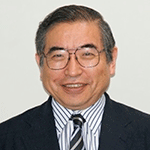 Nanocarbons Division Richard E. Smalley Research Award
Nanocarbons Division Richard E. Smalley Research Award
Monday, May 29 | 1400-1440h
Churchill A1
Artificial Photosynthesis Utilizing Nanocarbons
By Shunichi Fukuzumi
Shunichi Fukuzumi earned BS and PhD degrees in Chemical Engineering at Tokyo Institute of Technology in 1973 and 1978, respectively. After working as a postdoctoral fellow (1978-1981) at Indiana University, he joined the Department of Applied Chemistry at Osaka University as an Assistant Professor in 1981 and was promoted to a Full Professor in 1994.
His research interests are artificial photosynthesis and electron transfer chemistry.
He is now a Distinguished Professor of Ewha Womans University, Designated Professor of Meijo University, and Professor Emeritus of Osaka University. He has published more than 1,083 scientific publications and 36,700 citations with the h index = 93.
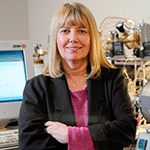 Physical and Analytical Electrochemistry Division David C. Grahame Award
Physical and Analytical Electrochemistry Division David C. Grahame Award
Tuesday, May 30 | 1410-1450h
Grand Salon D – Section 19
Nanoscale Templates and Scaffolds for Electrochemical Device Applications
By Viola Birss
Viola Birss is a world leader in the area of electrochemistry at surfaces and interfaces and in nanomaterials development for a wide range of clean energy applications. She is recognized for making seminal contributions to the understanding of hydrous oxide surface films, and more recently, her team has been developing electrocatalysts and support materials for high temperature and low temperature fuel cells, electrolysis cells, and supercapacitors. Birss is currently a Professor of Chemistry and has been a Tier I Canada Research Chair in Fuel Cells and Related Energy Systems at the University of Calgary since 2004.
Throughout her career, Birss has been the recipient of numerous prestigious scientific awards and honors and is a fellow of the Royal Society of Canada, ECS, and the Canadian Society for Chemistry.
Additionally, Birss was a co-founder and leader of both the Western Canada Fuel Cell Initiative and the Solid Oxide Fuel Cells Canada Network and is currently the scientific director of the Calgary Advanced Energy Storage and Conversion Research Technology group.




